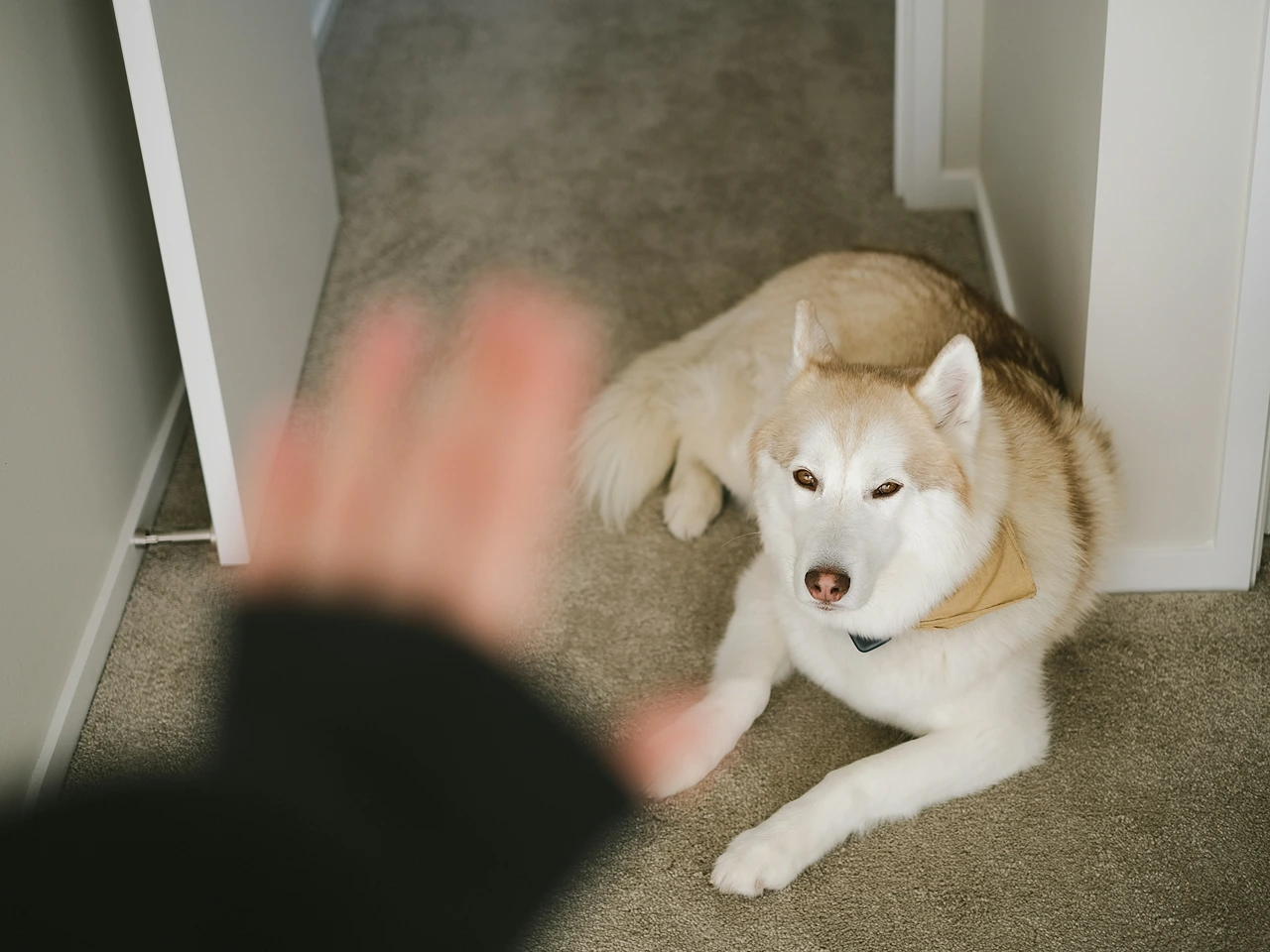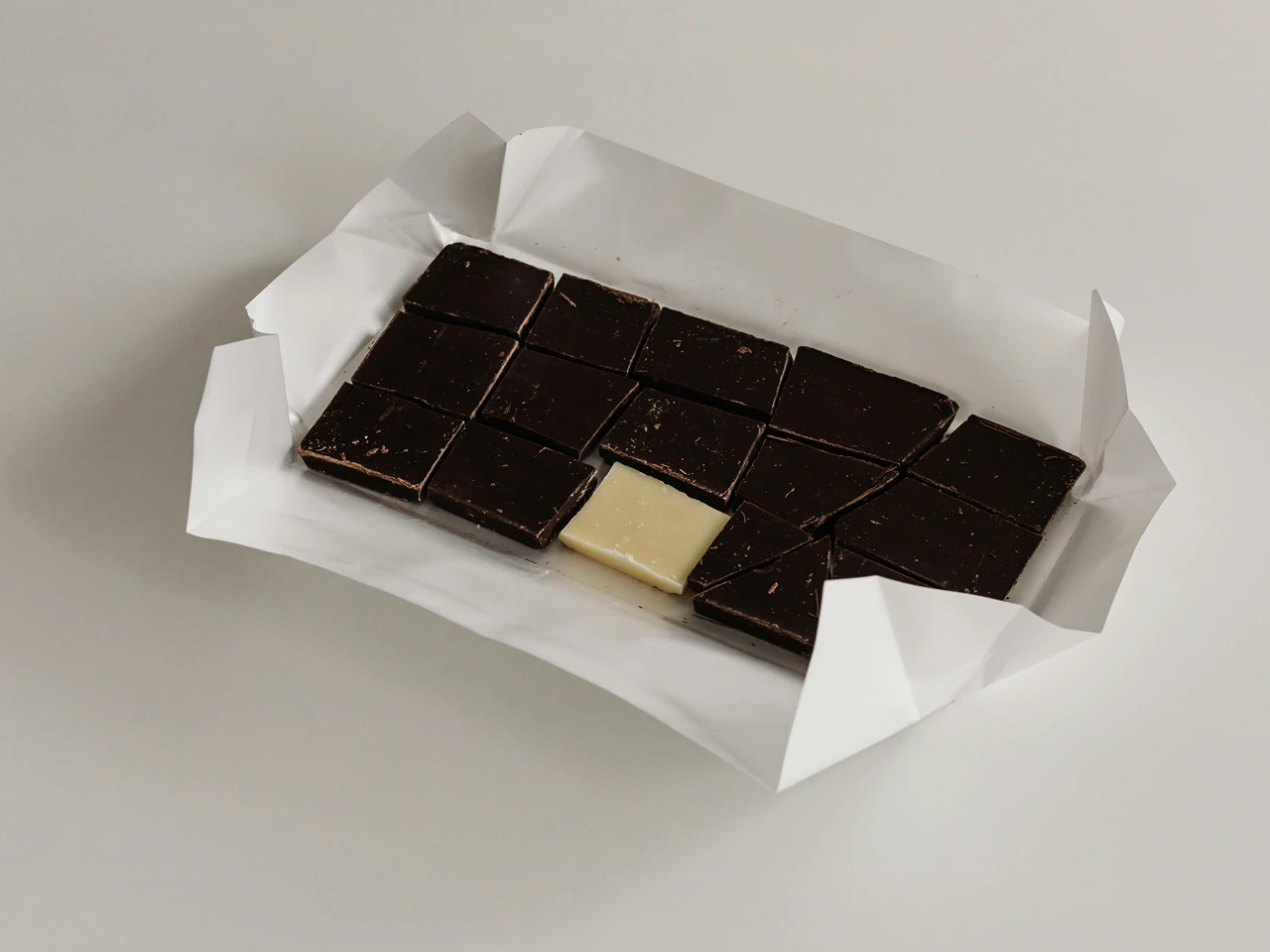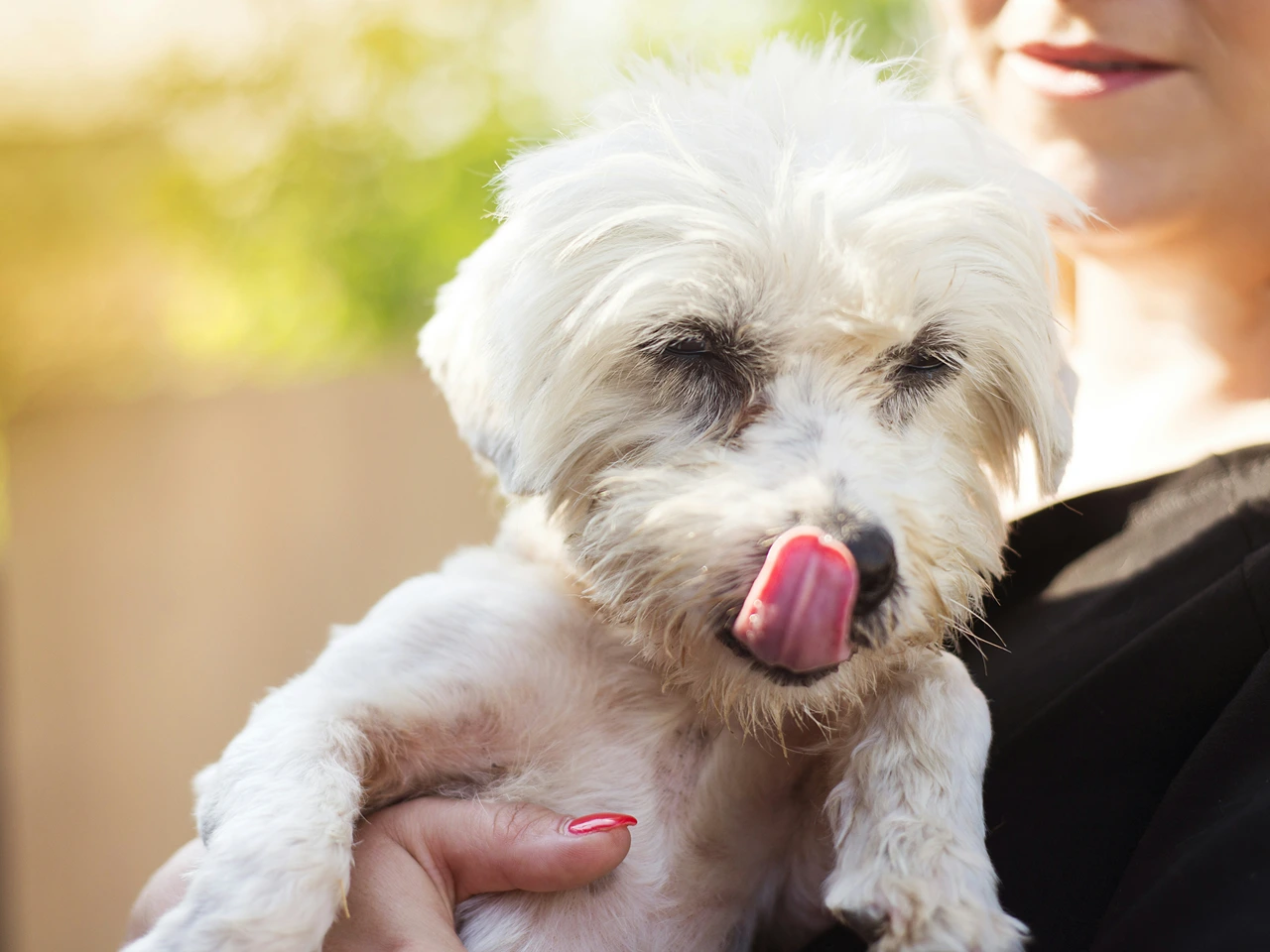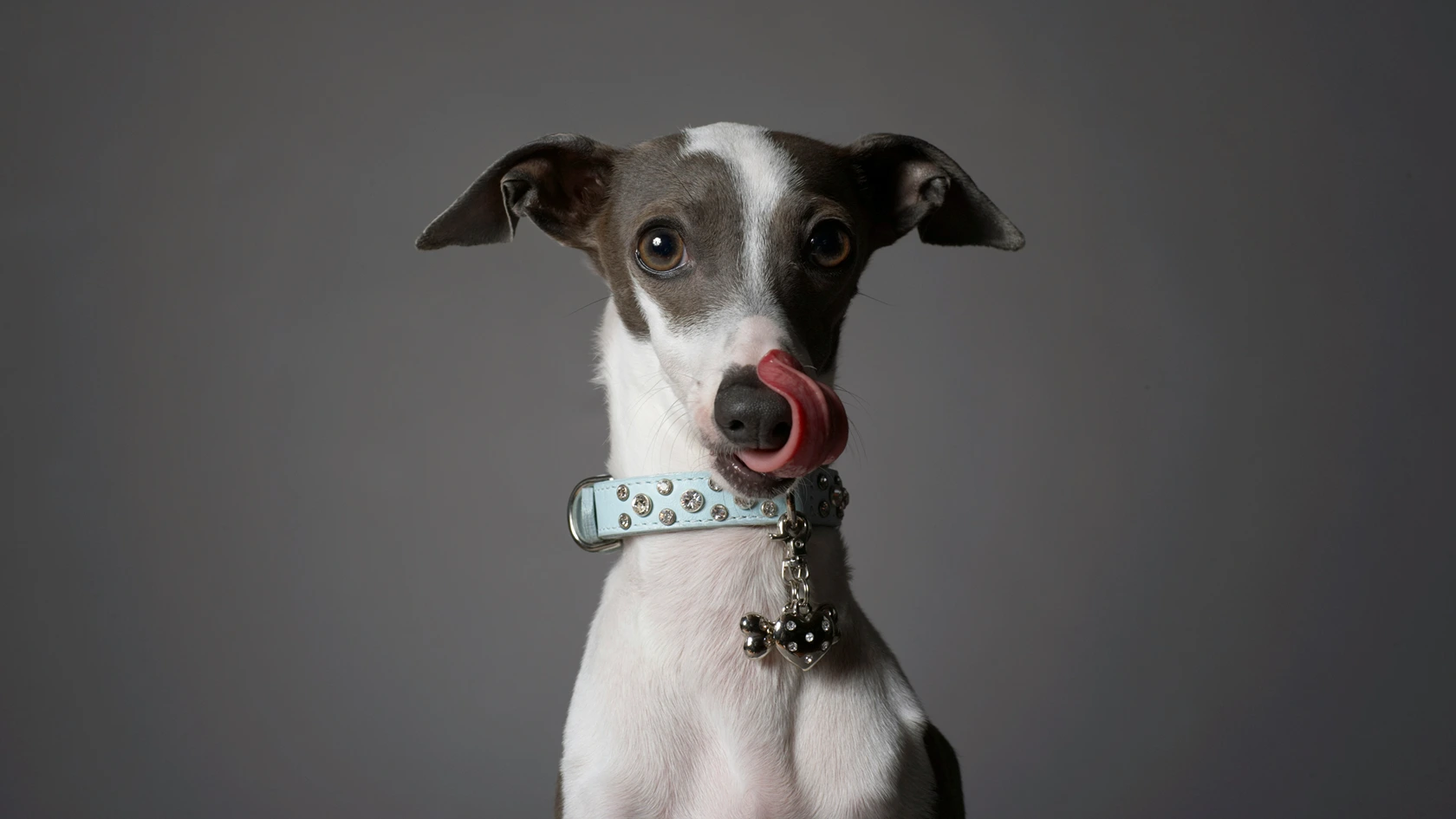TL;DR: Can Dogs Eat White Chocolate?
- Chocolate is toxic to dogs: Theobromine and caffeine build up in their system, making chocolate dangerous in any form.
- White chocolate is “less toxic,” but not safe: It has only trace amounts of theobromine, yet its high fat and sugar can trigger obesity, dental disease, and even pancreatitis.
- Health risks beyond toxicity: Eating white chocolate can lead to vomiting, diarrhea, pancreatitis, obesity, and dental disease.
- Toxicity depends on type and dose: Dark and baking chocolate are the most dangerous, but even small amounts of any chocolate aren’t recommended.
- Act fast if ingested: Note the type, amount, and timing, then contact your veterinarian or a pet poison helpline immediately.
- Safe alternatives: Stick to vet-approved treats and dog-friendly snacks instead of risky human sweets.
Need guidance? If you suspect your dog ate chocolate, contact us immediately for expert advice.
As a pet owner, you’ve probably heard that chocolate is dangerous for dogs. But what about white chocolate? While some people assume it’s safe since it doesn’t look like dark chocolate, each type of chocolate affects dogs differently, and the truth is that chocolate is dangerous for dogs in any form. White chocolate has way less theobromine and caffeine than dark or milk chocolate, but it can still be risky, especially if consumed in large amounts.
The difference lies in how dogs process these ingredients compared to humans, making even small amounts a potential concern. Let’s go over why chocolate is dangerous, how white chocolate affects dogs, and what to do if your dog has eaten some.
Why Chocolate is Bad for Dogs

Chocolate contains a chemical called theobromine, which is toxic to dogs. While humans metabolize it quickly, dogs don’t, meaning the amount of theobromine builds up in their system. On top of that, chocolate also contains caffeine, which further increases toxicity.
The darker the chocolate, the more harmful it is. Dark chocolate, milk chocolate, and especially baker’s chocolate have high cocoa content, making them dangerous for dogs. This is why the type of chocolate matters—chocolate toxicity is worse in darker varieties compared to white.
Can Dogs Eat White Chocolate?

So, what about white chocolate? White chocolate contains only trace levels of theobromine and caffeine, making it less toxic to dogs compared to milk and dark chocolate. In fact, white chocolate contains lesser amounts of these harmful chemicals because it’s mostly cocoa butter, fat, sugar, and dairy. That’s why some people say white chocolate is usually the “safest” form. But that doesn’t mean it’s good for dogs.
White chocolate may not lead to immediate signs of chocolate toxicity, but it can cause problems like obesity, dental disease, and even pancreatitis if dogs consume too much. In other words, the reason why white chocolate is bad for dogs isn’t because of the theobromine levels in it, but because the fat and sugar in white chocolate are equally harmful.
So, even small amounts should be avoided; dogs should not eat any kind of chocolate.
How Much Chocolate Is Too Much for Dogs?
The toxic amount of chocolate depends on both the amount of chocolate and the dog’s size. A small amount of white chocolate is far less risky than a large amount, but neither is recommended. White chocolate contains significantly less theobromine (around 0.25 mg per ounce) compared to dark. For a dog to reach toxic theobromine levels from white chocolate alone, they would need to eat an extremely large amount—often pounds of it.
- Dark and baking chocolate has the highest levels of theobromine, making it extremely toxic.
- Milk chocolate contains moderate amounts but can still be harmful in smaller portions.
- White chocolate has only trace amounts, yet it isn’t safe because of its fat and sugar.
Toxicity depends on dose per body weight. Clinical signs can start at about 20 mg/kg, with seizures possible around 60 mg/kg, and potentially lethal effects above 100 mg/kg.
If you’re worried, a chocolate toxicity calculator online can help estimate risk, but you should always consult a vet instead of relying on tools.
What Happens if a Dog Eats White Chocolate?

When a dog eats a large amount of white chocolate, it’s not just the theobromine you have to worry about. The truth is, white chocolate can cause a handful of other health problems that can be just as serious. Here’s what might happen:
- Vomiting and diarrhea: Even a little bit of chocolate can cause an upset stomach. In larger amounts, chocolate can cause an upset digestive system that quickly leads to messy, repeated vomiting or diarrhea.
- Pancreatitis: Since white chocolate is loaded with fat and sugar, it doesn’t take much to trigger pancreatitis—an inflamed pancreas that leaves your dog in pain and needing vet care.
- Dehydration: When vomiting and diarrhea don’t stop, fluid loss adds up fast. What starts as stomach upset can turn into dangerous dehydration before you know it.
- Weight gain: Giving your pup too much white chocolate over time means calorie overload. Obesity sneaks up this way, bringing along joint issues and heart strain.
- Dental problems: Don’t forget the sugar; white chocolate can cause plaque buildup, cavities, and sore gums if dogs get into it regularly.
So yes, white chocolate has less theobromine than dark chocolate, but at the end of the day, chocolate can cause more harm than good for your dog in many ways. Best to keep it off their treat list altogether.
Signs of Chocolate Poisoning in Dogs

Chocolate toxicity shows up most often with darker varieties like baking or dark chocolate, but no type is ever truly safe. If the chocolate your dog ate wasn’t white, be alert and watch for these warning signs:
Excessive thirst
Chocolate acts as a stimulant, and one of the earliest red flags is nonstop drinking. If your dog suddenly can’t seem to get enough water, it could signal chocolate poisoning.
Restlessness or anxiety
Chocolate contains caffeine and theobromine, which can overstimulate the nervous system. This often leaves dogs pacing, jittery, or unable to settle down.
Increased urination
Along with thirst, you may notice your dog needing bathroom breaks more than usual. This is because stimulants in chocolate affect the kidneys and bladder.
Vomiting and diarrhea
Beyond toxicity, chocolate can cause an upset stomach almost immediately. If your dog starts throwing up or has loose stools after eating chocolate, it’s a serious warning sign.
Elevated heart rate
Stimulants in chocolate strain the heart. A racing heartbeat, irregular rhythm, or panting can all point to dangerous levels of chocolate in the system.
Seizures in severe cases
In high doses, chocolate toxicity can overwhelm the nervous system. Seizures are one of the most severe outcomes and require emergency care.
These are clear and serious signs of chocolate poisoning. Don’t ignore any of these symptoms, whether your dog got into milk, dark, or white chocolate.
What to Do if Your Dog Ate Chocolate

If your dog ingests a large amount, don’t sit back and wait for symptoms in dogs to appear—taking quick action can make all the difference.
- Contact a veterinarian: The very first thing you should do is get in touch with a vet right away. They can assess the risk and guide you through the safest next steps.
- Note the type of chocolate: Be ready to share whether it was white, milk, or dark chocolate. This matters because milk or dark varieties carry far higher levels of theobromine and caffeine, making them more dangerous.
- Record the amount consumed: Knowing how much your dog ate helps professionals estimate the level of toxicity. Even smaller amounts of dark chocolate can pose serious risks.
- Track the timing: Write down when the chocolate your dog ate was ingested. The more accurate the timing, the better your veterinary team can calculate the danger and decide on treatment.
- Watch for warning signs: Keep an eye out for early symptoms of chocolate poisoning. Don’t wait for them to worsen before taking action.
- Follow your vet’s instructions: A professional may suggest at-home steps or ask you to come in immediately. In certain cases, a vet may recommend hydrogen peroxide to induce vomiting—but only under their guidance.
Remember: Even white chocolate can make dogs sick with its fat and sugar. Always keep chocolate stored out of reach and never offer it as a substitute for proper dog treats.
Final Thoughts
White chocolate may have less theobromine than other kinds, but it can still be harmful to dogs. Even if your pup seems fine after nibbling some, it’s not worth the risk—keeping all chocolate out of reach is the safest choice. Beyond toxicity, the high fat and sugar in white chocolate can trigger stomach upset, weight gain, or even pancreatitis over time.
Protecting your dog means avoiding chocolate altogether and sticking to safe, vet-approved treats. If you suspect your dog may be experiencing chocolate poisoning, your vet or a pet poison helpline should always be your first call.
Frequently Asked Questions
Is white chocolate bad for dogs?
Yes, white chocolate can still be harmful to dogs, even if it looks safer than darker varieties.
White Chocolate Poisoning Risk: While less common, eating enough of it can still upset your dog’s system.
High-fat Concerns: White chocolate contains cocoa butter, and all that fat can sometimes lead to pancreatitis in dogs.
Trace Theobromine Levels: Theobromine levels in white chocolate are low, but dogs can’t metabolize them properly.
Large Amounts are Risky: Eating a lot of white chocolate can cause vomiting, diarrhea, and obesity.
Overall Harmful to Dogs: Even if toxicity is rare, the fat and sugar make white chocolate unsafe.
What makes chocolate toxicity a concern for dogs?
Chocolate toxicity is dangerous for dogs because their bodies can’t process certain compounds the way humans do.
Types of Chocolate Matter: Different types of chocolate carry varying risks, with dark being the most toxic.
Nervous System Effects: The effects of chocolate include overstimulation, anxiety, or seizures.
Size Doesn’t Guarantee Safety: Dogs of any size can suffer from chocolate toxicity if the dose is high enough.
Extra Ingredients Add Risk: Chocolate may also contain caffeine, making symptoms appear faster.
Dogs’ Metabolism Issues: Dogs are highly vulnerable to toxicity due to their slow processing of theobromine.
Can dogs eat white chocolate safely in small amounts?
Even tiny portions are not recommended since white chocolate’s ingredients can still harm your pet.
Fat and Sugar Problems: White chocolate’s fat and sugar are more harmful than its trace of theobromine.
Hidden Dangers in Snacks: Snacks covered in white chocolate, such as cookies or nuts, can also add risks.
Safer Alternatives: Dogs can eat carob-based treats instead of any type of chocolate.
Not Completely Safe: Chocolate is less toxic in white form, but it still causes health issues.
Vet Guidance First: The best thing to do if your dog eats some chocolate is to call your veterinarian for advice.
What happens if dogs eat too much white chocolate?
Eating large amounts of white chocolate can trigger several health problems, even without severe toxicity.
Pancreatitis Risk: White chocolate, due to its fat content, can cause painful pancreas inflammation.
Digestive Upset: Dogs can’t process large amounts of sugar, leading to vomiting and diarrhea.
Potential Toxic Effects: The effects of chocolate in bulk may still include a rapid heart rate or hyperactivity.
Long-Term Health Issues: Dogs of any size risk obesity and dental problems from frequent exposure.
Professional Help Needed: A veterinarian and pet poison helpline should always be contacted after a large ingestion.
What should I do if my dog eats white chocolate?
Quick action is best to prevent serious problems from developing.
Immediate Response: The first step if your dog eats chocolate is to note how much and what kind.
Identify the Type: The type of chocolate matters; dark and milk are more dangerous than white.
Know the Warning Signs: Symptoms include vomiting, diarrhea, and elevated heart rate.
Don’t Dismiss White Chocolate: White chocolate poisoning still matters because sugar and fat complicate recovery.
Call the Experts: Always reach out to a veterinarian for proper guidance.




